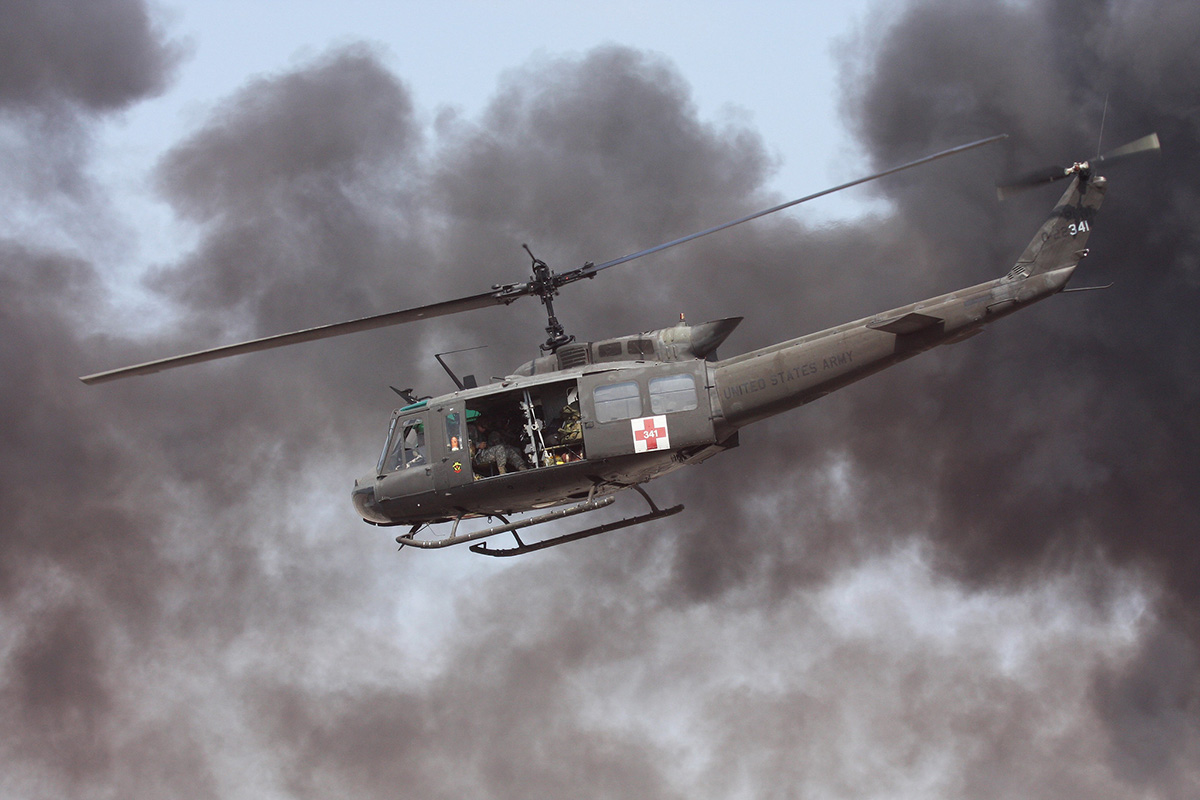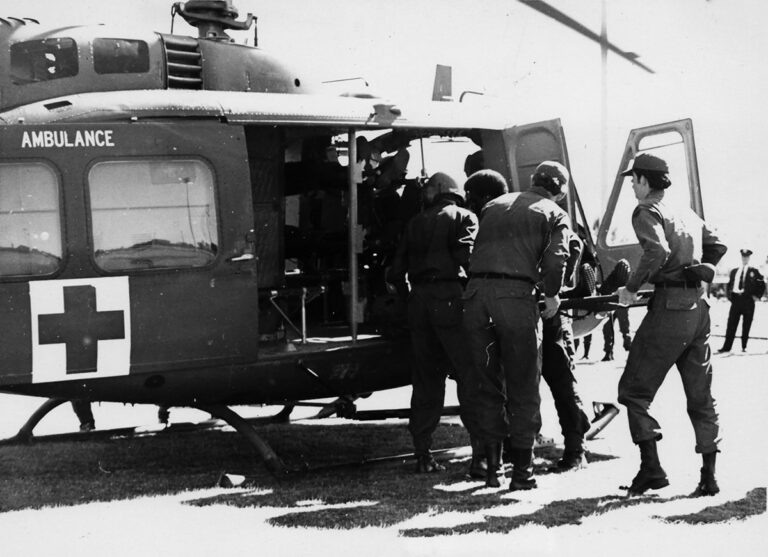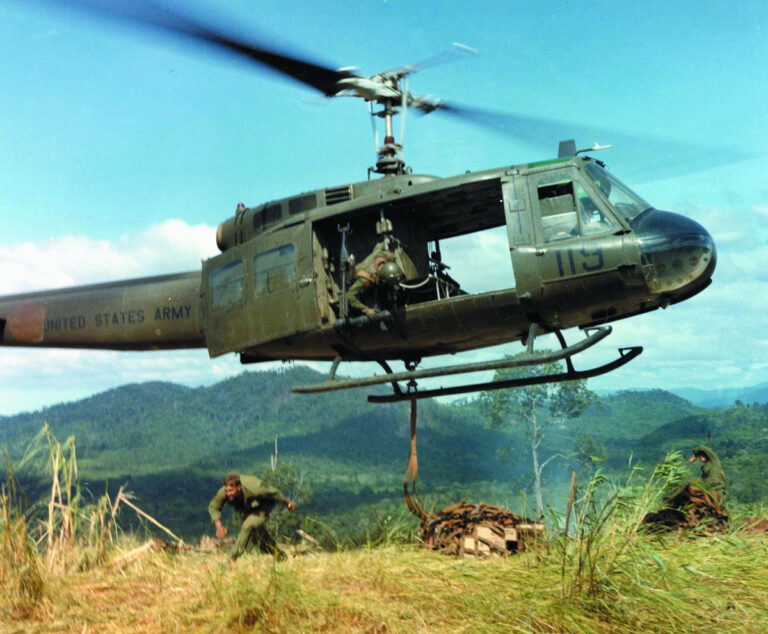The Huey Helicopter as a Medevac in Vietnam
Introduction
Helicopters were instrumental in the Vietnam War. The challenging terrain made land travel difficult. Moreover, long distances involved complicated things further. However, helicopters, particularly the Huey, changed the game. This article will explore how the Huey Helicopter became a crucial part of Medevac missions in Vietnam.
Helicopters in the Vietnam War
Terrain and Battle Lines
The arduous terrain in Vietnam was a barrier. Consequently, land transport was slow and challenging. The shifting battle lines added to the complexity. Lessons from Korea had prepared helicopters for action this time.
Introduction of the Huey Helicopter
In April 1962, the 57th Medical Detachment brought five Bell UH-1 helicopters. The “Huey” proved invaluable and gained legendary status. Its first Medevac was on 12th May 1962, and it became a constant presence.

Advantages of the Huey Helicopter
Size and Protection
The UH-1 had size and protection benefits over earlier helicopters. A Huey could carry three stretchers inside, allowing immediate critical care. Thus, the mortality rate dropped from 4 percent in World War 2 to 1 percent in Vietnam.
The Personnel Rescue Hoist
The rescue hoist was a significant addition to the Huey. It allowed pilots to hover and collect casualties, reducing time for care. By 1966, this method was widespread across the combat zone.
DMZ DUSTOFF VIETNAM: True Stories of Unarmed Medevac Missions As Told By The Men Who Flew Them
Grabbing the hand-held radio and transmitting on Guard, Halvorson alerted the tower to their situation. “This is Dustoff 7-oh-7 on guard, north of Quant Tri about 20 miles out. We have multiple wounded on board, no idea of their condition, no hydralics, and no instruments. We need a straight in. Clear everything, I need to be first in line”. It was about this this time that Gary noticed one of the few instruments still working was the engine temperature gauge, “And it was running pretty hot.”
Challenges and Bravery
Medevac Huey’s were unarmed, marked only by a red cross. Regardless, they were targets for the Viet Cong. This led to losses and acts of bravery by most pilots. Around a third of all crews suffered injuries due to hostile fire and crashes, making it a dangerous calling.
Other Medevac Helicopters
The primary Medevac helicopter was the Bell UH-1 Huey. Additionally, other helicopters like the Sikorsky H-19 Chickasaw, Boeing-Vertol H-21 Shawnee, and others aided in Medevac or casevac.
Conclusion
In summary, the Huey’s role as a Medevac helicopter in Vietnam was pivotal. Its size, protection, and adaptability made it indispensable. Furthermore, its use reduced mortality rates and increased efficiency. Despite challenges and dangers, the Huey’s legacy in Medevac during the Vietnam War remains a remarkable chapter in military history.









